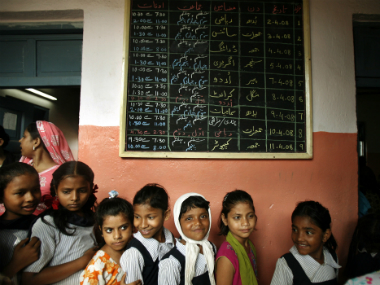A district-wise estimate of the health indicators released by the
National Family Health Survey-4 2015-16 have brought in good news for Mumbai city. Why? Females at birth in the last five years has gone up to 1,033 per 1,000 males. While Mumbai suburbs saw 932 females at birth per 1,000 males, the overall sex ratio of the state of Maharashtra has been recorded as 952 females over 1,000 males. Interestingly, other districts of Maharashtra – Nagpur, Nashik, Marathwada and far-flung Vidarbha region – too have shown a positive picture. Amravati has 1,052, Aurangabad: 1,130, Beed: 1,046, Bhandara: 1,204, the Naxal-affected Gadchiroli: 1,162, Gondiya: 1,037 and Hingoli: 1,002, especially the rural areas which were always known for female infanticides, have shown a considerable rise. [caption id=“attachment_2927746” align=“alignleft” width=“380”] Representational image. Reuters[/caption] The survey provides state and national information on the following indicators: Fertility, infant and child mortality, the practice of family planning, maternal and child health, reproductive health, nutrition, anaemia, utilization and quality of health and family planning services. The literacy rate among women (age group 15-49) in Mumbai is 90.5 percent as compared to 98.1 percent among males. However, a similar difference is visible throughout all the other districts. While in Maharashtra 80.3 percent females are literate as compared to 92.8 percent males. The infant and child mortality rates as compared to the
2005-06 survey have gone done by 13 and 17 percent respectively in Maharashtra. Also, the marriageable age of women has shown a considerable rise with women (age 20-24 years) married before 18 years has dipped by 25.1 as compared to 39.1 percent in 2005-2016. The survey, however, reveals that there has been a dip in the use of family planning methods by the state’s population. Any use of the modern-day methods as compared to 64.9 percent in 2005-06 has gone down to 62.6 percent. There has been a slight dip in the numbers of female sterilization from 51.1 24 to 50.7 percent, while that of male sterilization has been to 0.4 from 2.1 percent. The total unmet need has seen a marginal dip from 10 to 9.7 percent. However, this reflects the poor quality and unmet needs of the family planning services. “The NFHS-4 data will help the authorities identify the need for new programmes with area-specific focus,” a health ministry official was quoted as saying by DNA. Although the indicators like sex ratio, literacy rates, rising marriageable age have shown a steady upward trajectory, the quality of the family planning has not shown much improvement.
The district-wise estimates of the health indicators released by the National Family Health Survey-4 2015-16 have brought in good news for Mumbai city as females at birth in the last five years has gone up to 1,033 per 1,000 males.
Advertisement
End of Article


)
)
)
)
)
)
)
)
)



